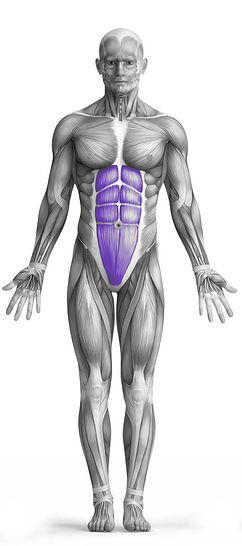Reach And Catch 101 Video Tutorial
0

Exercise Synopsis
Target Muscle Group
Abs
Secondary Targets
None
Execution
Isolation
Force Type
N/A
Required Equipment
Bodyweight
Fitness Level
Beginner
Variations
None
Alternatives
None
Timer
Hour
Minute
Second
Stopwatch
00:00:00:00
Overview
The "Reach and Catch" exercise primarily targets the abs, engaging the core through controlled movements. In this bodyweight exercise, you start by lying on your back with your legs extended and arms reaching overhead. You then lift your upper body off the ground, reaching forward with your hands as if trying to catch something, and return to the starting position. The exercise emphasizes core activation and stability as you control the movement, making it an effective way to strengthen the abdominal muscles. No equipment is required, making it accessible for various fitness levels.
How to Perform
Begin by setting up a mat on the floor and lying flat on your back, ensuring your body is fully supported.
Keep your feet together and draw them toward your torso, raising your knees off the floor to engage your core.
Extend both arms and place your hands on your right thigh, with your shoulder blades slightly lifted off the ground. This is your starting position.
Engage your core muscles and perform a controlled crunch, sliding your hands up your right thigh towards your knee.
Gradually lower your upper body back to the starting position, maintaining control of the movement.
Continue for the recommended number of repetitions, then switch to the left side, repeating the same motion.
★ Bonus: For exercises that involve external weights (such as dumbbells, barbells, or machines), the One Rep Max (1RM) calculator can help you estimate your maximum lifting capacity. Use it to track your strength progress and adjust your training for optimal results.
Tips
To increase the challenge, hold the top position for a count of 2 before lowering back down.
How Not to Perform
Avoid Using Momentum: Do not swing your arms or use momentum to lift your body. Focus on controlled, slow movements to engage your core effectively and avoid straining other muscles.
Don’t Lift Your Feet: Keep your feet grounded and avoid lifting them off the floor. This will ensure the exercise targets your abs and prevents unnecessary strain on your lower back.
Avoid Straining Your Neck: Do not pull on your neck or head with your hands. Your hands should only rest lightly on your thigh to guide the movement, while your core should be doing the work.
Don’t Overextend Your Reach: Avoid reaching too far past your knees. Overextending can strain your lower back and reduce the effectiveness of the exercise on your abs.
Don’t Rush the Movement: Avoid performing the exercise too quickly. Slow, deliberate movements ensure maximum engagement of the core muscles and help prevent injury.
Don’t Forget to Breathe: Don’t hold your breath during the exercise. Exhale as you lift your upper body and inhale as you return to the starting position, keeping your breathing steady throughout.
Avoid Arching Your Lower Back: Keep your lower back pressed against the floor. Arching your back can cause strain and decrease the focus on your abs.
Don’t Use Your Arms for Support: Avoid using your arms to push yourself up. Let your abs do the work while keeping your arms relaxed on your thigh. This will help you maintain proper form and target the right muscle group.
Variations
Variations of fitness exercises refer to different ways of performing a specific exercise or movement to target various muscle groups, intensities, or goals. These variations aim to challenge the body differently, prevent plateaus, and cater to individuals with varying fitness levels.
Alternatives
Alternative exercises in fitness refer to different movements or activities that target similar muscle groups or serve the same training purpose as the primary exercise. These alternative exercises can be used as substitutes when the original exercise is unavailable or challenging to perform due to various reasons such as equipment limitations, injuries, or personal preferences.








